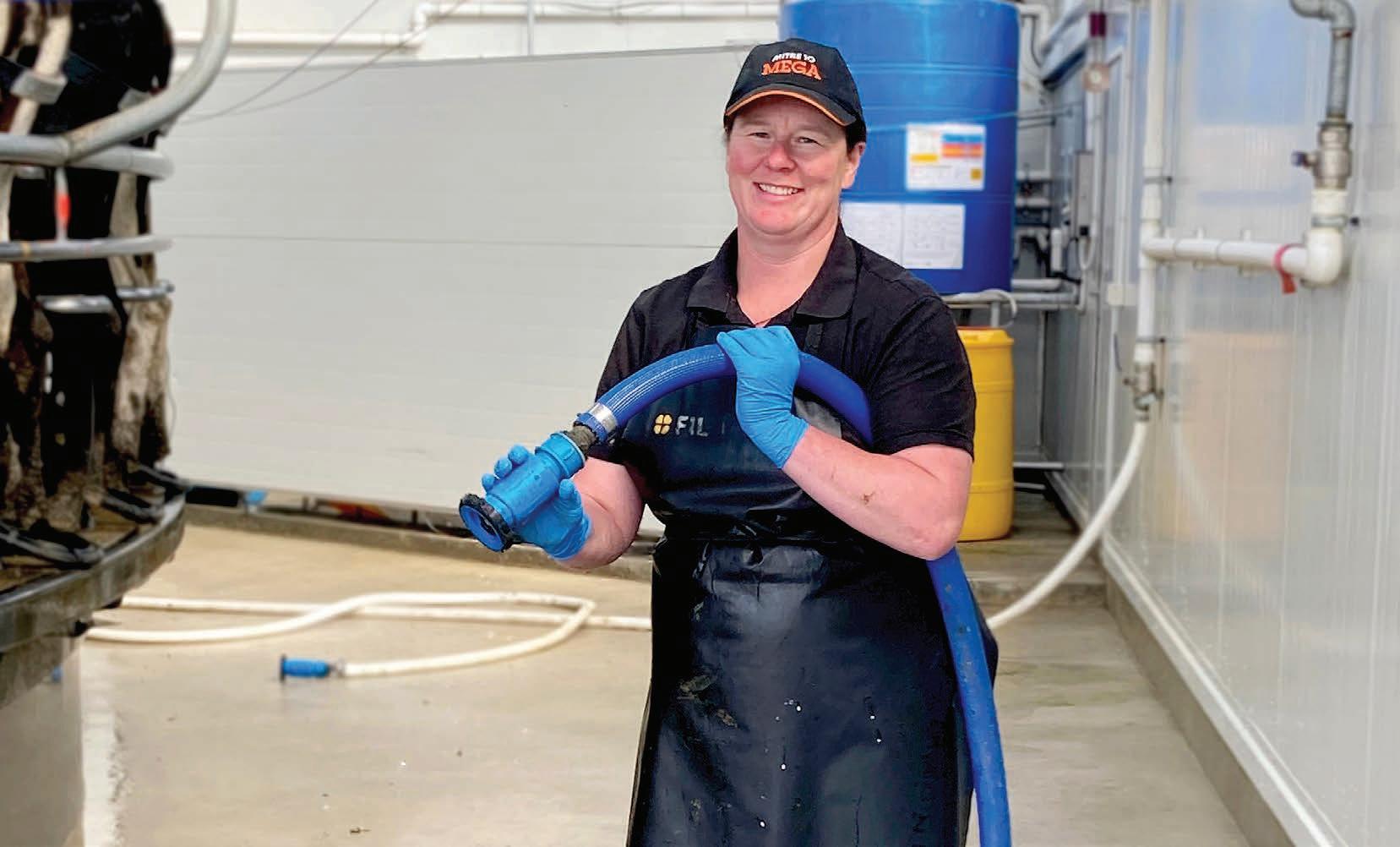
4 minute read
Research
Heifers in synch
By Samantha Tennent
A research study shows that synchronising heifers leads to a better conception rate.
Alarge-scale research study has confirmed that heifers conceive earlier and there are fewer empties when they are synchronised with the DIB Co-Synch programme in their first mating, when compared with natural mating.
This was the first study of its kind under New Zealand conditions and took place over two years in North Canterbury through Rangiora Vet Centre, with the support of AgriHealth.
“We wanted to measure the reproductive outcomes for a heifer synchrony programme compared to a control group which were naturally mated,” Rangiora veterinarian Richard Nortje says.
“It hadn’t been done in New Zealand under our farming management conditions before and we knew it would give us reliable information to support our farmers in their heifer mating decisions.”
The heifers involved in the study were weighed before mating started and randomly allocated to groups, some being synchronised and artificially inseminated and others being mated naturally. All of their management was the same otherwise.
The study found that the synchronised heifers had improved reproductive and economic outcomes compared with their naturally mated counterparts. There were higher pregnancy rates at seven days, three weeks and four weeks in the synchronised heifers and they tended to have higher six-week in-calf rates.
There were significantly more animals pregnant from the synchronised group at the end of mating.
“A key benefit we saw from the synchronised group was an average of 11 more days in milk compared to the bull mating, and that means more milksolids and more income from those animals,” Nortje says.
“And there were 3% less empty heifers at the end of the mating period in the synchronised group.”
Researchers also wanted to see if there were any additional benefits from calving earlier and found that, due to the higher pregnancy rates and higher conception rates, farmers were getting more AB heifer calves, with the resultant genetic gain.
They measured flow-on effects the following mating but they did not find any additional benefits the following season. All of the benefits were realised in the first mating and in the extra replacement calves and genetic gain.
“From the farmers’ perspective, there were additional benefits of knowing when animals were going to calve and being able to plan and manage accordingly,” Nortje says.
“Plus the actual synchronisation and mating were simple to manage. There were three yardings including mating.”
Veterinarians are finding it valuable to have evidence for farmers to show them the benefits of a heifer synchrony programme.
“Those economic benefits, as well as better time management, more AB heifer calves and a faster rate of genetic gain have encouraged more farmers to consider synchronising their heifers each season,” Nortje says.
“It’s certainly worth looking at for many farmers.” n
Heifer synchrony research shows higher pregnancy rates at seven days, three weeks and four weeks in the synchronised heifers – and they tend to have higher six-week in-calf rates, too.
Lab-grown food under microscope
Two cutting-edge food research entities are combining to form a New Zealand first in advanced science, after an agreement was signed by the Riddet Institute and AgResearch recently.
The first ever NZ chair in cellular agriculture has been created, with the new professorship destined for Massey University’s Palmerston North campus. The position is to be jointly funded by Massey University and AgResearch.
Cellular agriculture is a disruptive new technology that can produce animal protein-based foods using animal cell cultures, but without animals. The emerging field uses advances in biotechnology and will provide the means to eventually produce protein foods such as dairy- or meat-like products in a laboratory, according to AgResearch Science Group manager Stefan Clerens.
The Riddet Institute is a Centre of Research Excellence (CoRE), hosted by Massey University, focusing on advanced food research, and AgResearch is a Crown Research Institute specialising in the pastoral and agri-technology sectors. The two entities share the state-of-the art research facility Te Ohu Rangahau Kai in Palmerston North, where the new position will be located.
Riddet Institute director Distinguished Professor Harjinder Singh says the new joint role demonstrates the strength of the partnership between AgResearch, the Riddet Institute and Massey University.
Singh says the field of cellular agriculture is rapidly growing around the world and “biotechnologies for producing animal protein-based foods without animals have the potential to significantly disrupt the traditional animal protein industry”.
“It is extremely important for New Zealand to develop future capability in cellular agriculture and exploit new commercial opportunities.”
Clerens says although there are several players in the market trying to produce lab-grown food alternatives, there is limited understanding of the nutritional repercussions of these products.
Following the signing of the agreement between the two institutes, the position has been advertised globally. Clerens says cellular agriculture is still a niche area and only a select few scientists around the world are qualified in the specialty. n
Bugged by High Cell Counts?



On-farm rapid Mastitis test Test high SCC cows on-farm to identify the bug in 24 hours Reduce somatic cell count to achieve milk premiums

Contact us on 0800 821 421 or talk to your local vet

Paul Mahony, 650 cows, Waikato farmer










